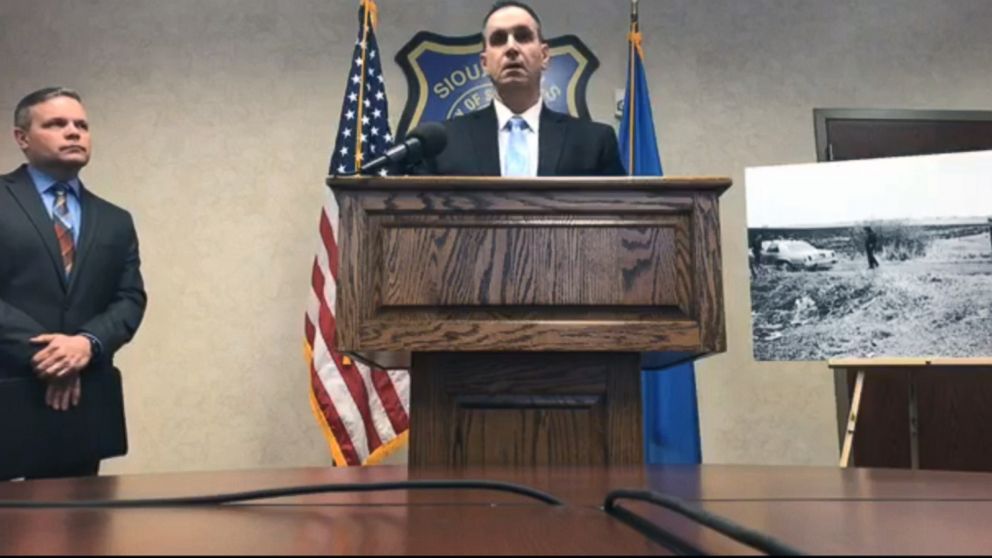DNA leads to arrest of woman who allegedly left baby in a ditch to die 38 years ago: Police
New DNA technology has led to the arrest on Friday of a South Dakota woman who is being charged with murder for allegedly leaving her newborn in a ditch 38 years ago, according to police.
On Feb. 28, 1981, a full-term baby boy was found in a blanket in the cold in Sioux Falls, police said. The baby had been born alive, but died from exposure to the elements, a coroner said, according to Sioux Falls police.
No suspects or family members were identified, police said. A cemetery interred the baby and give him the name of Andrew John Doe, police said.
After nearly four decades on Friday morning, the baby's mother, 57-year-old Theresa Bentaas, was arrested and accused of leaving the baby alive in the ditch, Sioux Falls police said at a news conference. She was charged with first-degree murder, second-degree murder and first-degree manslaughter, police said.
The baby's father was also interviewed, but not arrested because "it was determined that at that time they were young teenagers and he did not know," Sioux Falls police Detective Michael Webb said.
The cold case first heated up 10 years ago as DNA technology advanced and investigators looked into obtaining DNA from the unidentified baby, Webb said.
It was sheer determination and stubbornness coupled with science and DNA and genealogy that solved this.
In 2009 the baby's body was exhumed and his DNA was put into databases, but over the years there were no matches, Webb said.
Then in April 2018, Webb said the arrest of the suspected "Golden State Killer" piqued his interest.
The alleged "Golden State Killer," a serial killer and rapist who terrorized California in the 1970s and 1980s, became the first person to be publicly arrested through genetic genealogy. Genetic genealogy takes an unknown suspect's DNA from a crime scene and identifies the suspect through his or her family members, who voluntarily submit their DNA to genealogy databases.
Since April 2018, genetic genealogy has helped identify more than three dozen suspects, according to CeCe Moore, chief genetic genealogist for Parabon NanoLabs, which has worked on the majority of the cases, including Andrew John Doe.
Parabon helped Sioux Falls investigators build a family tree based on the baby's DNA, and they combed through old birth and marriage announcements to help put the pieces together, Webb said.

A possible match was found in February 2019. The suspect, Bentaas, still lived in Sioux Falls and police executed a search warrant to get her DNA, police said. DNA tests then confirmed Bentaas was the baby's mother, police said.
The baby's father was also still living in Sioux Falls, Webb said.
"We did interview them last Wednesday on the anniversary that we believe the baby was put in the ditch, on Feb. 27," Webb said. "It was confirmed that the baby was theirs."
Bentaas is scheduled to appear in court on March 11. Her public defender declined to comment to ABC News Friday.
"It was sheer determination and stubbornness coupled with science and DNA and genealogy that solved this," Webb said. "All these cold cases and these children, victims of homicides that are being solved nowadays, including the Golden State Killer...just keep pushing, because that new advancement is right around the corner. It's pretty amazing."



